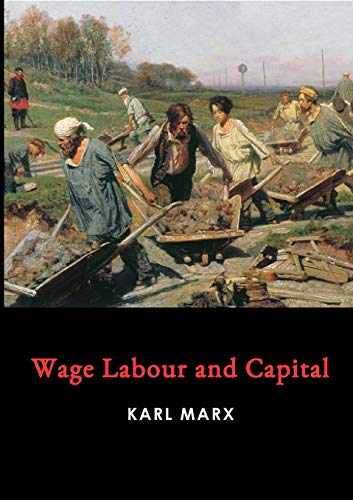


Moreover, Engels published an edition of Wage Labor and Capital in Berlin in 1891, having amended the text to bring the terminology into line with the development of Marx’s thinking after 1849. However, although the articles that were published in Neue Rheinische Zeitung are based on the lectures that Marx had delivered to the German Workers’ Society, they do not encompass the entire content of these lectures. In short, Marx gives us a popular outline of the economic relations that constitute the material conditions for class struggle in capitalist society. In the articles, he introduces ideas-such as the necessity of cooperation in production, the relative impoverishment of the working class, and the concentration of capital-which he would develop to a much higher level in later works, especially Capital. The significance of Wage Labor and Capital is that it is Marx’s first, systematic exposition of his theory of the economic relations of capitalist society. Thus, Marx was precluded from publishing Wage Labor and Capital in Brussels in the February of 1848, as he had intended. However, in February of 1848, following the outbreak of revolutionary activity in France, the Belgian police arrested and deported the members of the Society, and Marx was forced to move to Paris.

Marx and Engels had founded the Society to educate those German workers who had migrated to Belgium in search of higher standards of living. Marx had delivered the five articles which were published in Neue Rheinische Zeitung as a series of lectures to the German Workers’ Society in Brussels, in the second half of December of 1847. In response to the new revolutionary line, the Government shut down the newspaper in the May of 1849, at which point Marx returned to Paris. However, in the April of 1849, following counterrevolutionary activity in France and Germany, Marx abandoned the policy of cooperation with the radical liberals and argued for the establishment of an independent workers’ party. The subtitle of this newspaper was “organ of democracy,” and, at first, it supported the radical liberals, who were the left wing of the Parliament in Frankfurt, against the King (Friedrich Wilhelm IV). Marx published over 80 articles in Neue Rheinische Zeitung, the first edition of which came out in June 1848. This text was published for the first time, in the April of 1849, in Neue Rheinische Zeitung, a newspaper which Marx had founded and was editing in Cologne, following the spread of revolutionary activity from France to Germany in the March of 1848. In Wage Labor and Capital, Marx sets out, in embryonic form, a theory of capitalist relations of production. We present here a reading guide to Wage Labor and Capital, which can help comrades digest the key ideas from this classic text by Karl Marx.


 0 kommentar(er)
0 kommentar(er)
